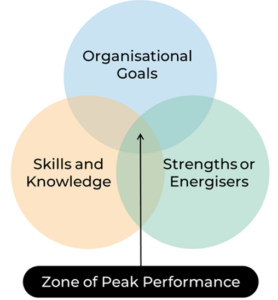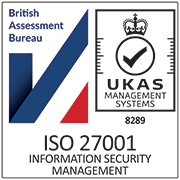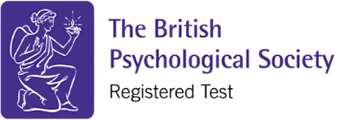The difference between strengths and skills
Skills development is becoming increasingly important for organisations to remain competitive, foster innovation, and empower their workforce to adapt to future challenges. However, more are finding that skills and training alone are not enough to drive engagement and performance.
When we look at skills, they are different from strengths as a skill is an ability developed through knowledge, practice, and training that enables one to perform tasks effectively.
When we talk about strengths, we define them as underlying qualities that energise us, and we are great at, or have the potential to be great at. They bring us energy and excite us the most. It is our strengths that can determine how engaged we are with a task.
Skills and strengths work together, as both are essential for achieving effectiveness and maintaining energy in tasks. Leveraging your strengths while developing skills can streamline learning, making it both easier and more impactful. You can almost see strengths as providing a powerful boost of energy when approaching learning and development tasks.
For more information on how to boost skill development with strengths, check out our blog post: How can you boost skill development with strengths?
How do you communicate this difference to clients?
To successfully integrate strengths into skill development programs, it’s important to highlight both the advantages they bring and the ways in which they can enhance the development process. Our Zone of Peak Performance model can aid in showing how combining strengths with upskilling activities can enhance performance outcomes for employees, leaders, and teams alike. 
For employees to truly thrive and develop, they require self-awareness of their unique strengths. Our strengths-based assessments offer this insight by identifying an individual’s top seven signature strengths from a range of 24 scientifically validated strengths.
Strengths provide us with the greatest opportunities for development and growth. They are areas where we can achieve peak performance if we intentionally build skills, knowledge, and experience over time in those areas.
When people are encouraged to use their strengths while learning new skills at work, they’re more likely to experience:
- Higher learning persistence – You are more likely to show focus and determination in areas of strength, persevering even in the face of pressure and adversity.
- Faster skill acquisition – You will find it relatively easy to learn new tasks when you are playing to your strengths. You are therefore more likely to make rapid progress toward high levels of effectiveness in these areas.
- Higher levels of skill development – When using a natural strength, you are likely to achieve repeated success when you perform an activity.
- More enjoyment in the learning process – You will be happy, positive and energised when doing work that plays to your strengths.
How leadership habits and team habits relate to skills
There’s some very interesting data coming from our Team Effectiveness in the Workplace report, specifically around how Team and Leadership habits can evaluate overall effectiveness.
Clarity is the most significant predictor of overall team effectiveness, which includes:
- The team is clear on each member’s role and expected contribution to the team’s goals
- The team’s purpose is clear, meaningful and understood by all team members
- The team has clear, measurable goals and implementation plans to achieve its purpose.
We encourage teams to upskill across all these team skill areas, using their strengths wherever possible to create a strong level of engagement, resilience, and build on areas where they already have competence.
For leaders and looking at our Leadership habits, sharing vision is the most significant predictor of overall leadership effectiveness, which includes:
- Sets strategic goals based on a good understanding of the organisation’s changing environment
- Inspires others with a simple, energising and realistic vision of what success could look like
- Keeps people and stakeholders focused on the bigger picture and longer-term priorities.
Bringing strengths into upskilling leadership development plans enables employees to achieve their learning goals faster and with more energy. It is important to consider how they can take their leadership skills to the next level by identifying skill areas linked to areas of natural strength. Guidance on this can be found in our StrengthscopeLeader™ report.
We encourage employees to identify their strengths, which are most helpful for their upskilling, with these connections being specific. People tend to show more persistence and competence in areas where they can identify a connection to their strengths. This kind of mapping can be adapted for any role, industry, or career by identifying the most relevant strengths for the skills required. It provides clear focus areas for upskilling that align with an individual’s strengths.













